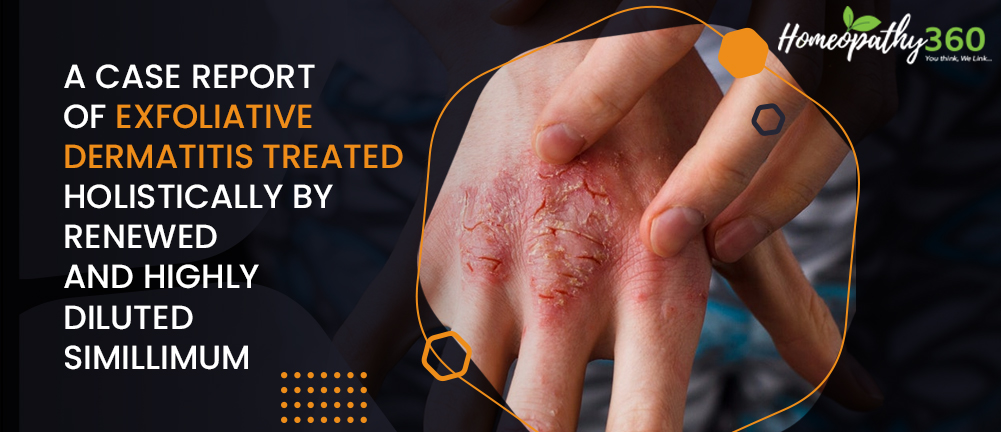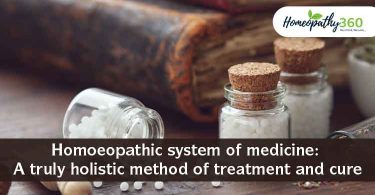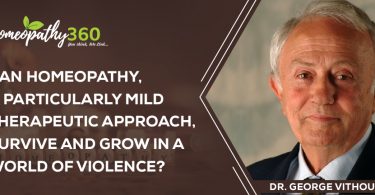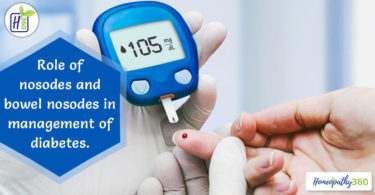
ABSTRACT:
INTRODUCTION: Exfoliative dermatitis also known as erythroderma is an uncommon but serious skin disorderin which most and sometimes all of the skin is involved in erythematous inflammation resulting in massive scaling. A variety of diseases and other exogenous factors may cause exfoliative dermatitis. There are idiopathic causes too. In homoeopathy, this condition can be treated effectively without the aid of steroids and ointments by the right selection of medicine, called ‘simillimum’.
CASE SUMMARY: A case of 80 years female, suffering from exfoliative dermatitis of idiopathic cause treated effectively by homoeopathy is being described here to show the efficacy of renewed and highly diluted similar medicine in addressing such seriously ill patient.
KEYWORDS: exfoliative dermatitis, simillimum, Arsenicum album, fifty millesimal scale.
INTRODUCTION
Exfoliative dermatitis is a disease process in which most and sometimes all of the skin is involved in erythematous inflammation resulting in massive scaling. This condition is otherwise called as dermatitis exfoliativa, pityriasis rubra and erythroderma. Although the disease affects both men and women, it is more common in men with an average male-to-female ratio of 2.3:1. The average age at onset is 55 years. Although exfoliative dermatitis may occur at any time.[1]
In exfoliative dermatitis, cells die and shed too quickly in a process called turning over. The rapid turnover of skin cells causes significant peeling and scaling of the skin. The peeling and scaling may also be known as sloughing. Many people who already live with chronic skin conditions including autoimmune diseases, psoriasis, seborrheic dermatitis and eczema or taking some medications can also develop exfoliative dermatitis. Certain types of cancer including leukaemia and lymphoma may also accelerate the skin cell turnover rate. According to Merck manuals up to 25 percent of cases of exfoliative dermatitis are idiopathic.[2]
Symptoms of exfoliative dermatitis include, extreme redness of the skin, scaling (large in case of acute and small in case of chronic), crusting lesions, thickened skin, itching, swollen lymph nodes, fever, malaise, secondary viral or bacterial infection.[3] Once the exfoliative process involves the scalp, 25 percent of patients develop alopecia. Nails can often become dystrophic, particularly in patients with pre existing psoriasis.[1] Nails may become thickened or ridged.[2] other symptoms noted are malaise, pruritis and a chilly sensation. Both hyperthermia and hypothermia are reported. Other clinical findings include lymphadenopathy, hepatomegaly, splenomegaly, edema of the foot or ankle and gynaecomastia.[1] Complications can include infection, loss of nutrients, dehydration, and heart failure, rarely leading to death.[2]
CASE REPORT
A female aged 80 years presented with the following complaints:
Patient was apparently well before 1 month. Initially she had intense pruritic erythematous patches on left foot which got gradually extended to lower one third of leg.10 days later, similar presentation appeared in right foot accompanied by symptoms of dryness, itching, scaling and peeling of skin (large scales) of both foot and lower one third of left leg. Some non-uniform dry erythematous scaly patches with slight peeling of skin were also seen in trunk. Peeling of skin was more in lower one third of left leg involving foot and right foot when compared to trunk. Dryness and itching of skin is <night and cold. Pitting oedema of lower one third of left leg is present because of which walking got slightly restricted.
There is no history of autoimmune disorders, any systemic illness and malignancies. Neither personal history nor a family history of skin disorders (eczema or psoriasis). No history of trauma and medications. No fever, hair loss, nails shedding or onchylosis is noticed.
Findings on physical examination
Inguinal nodes are enlarged on both sides. Diffuse erythema, dryness and widespread non uniform erythematous scaly patches involving left foot and lower one third of right leg including foot. Soles are spared. Nails appear to be thickened and clean.
Treatment history
For the above complaints patient took ayurvedic treatment, but only got mild relief. Peeling of skin remained the same.
Detailed case history was taken and following symptoms were considered for selection of remedy:
- Very anxious about her disease.
- Desire for sweets and milk.
- Chilly patient.
- Sleep disturbed due to itching.
- Intense dry, pruritic erythematous patches with peeling of skin (large scales).
- Itching<cold and night.
- Pitting oedema of lower one third of left leg
Symptoms are repertorised through Radar software (Synthesis 9.0) and given as image (Figure 1).
Figure 1: Repertorisation chart provided in image form

Considering the symptoms, Arsenicum album 0/1 was prescribed, 10 drops with quarter glass of water, morning and night before food on 8th December 2019. Every time patient was insisted to do 10 successions by hand and it was continued for 15 days. Patient was improving and responding very well to Arsenicum album 0/1. Further follow up details are given in Table 1. Appearances of the skin lesions before and after treatment are given as photographic images in Figure 2. All over improvement of patient is being confirmed by modified naranjo criteria and given (Table 2).
Table 1: Time line & Follow ups
| Date | Alteration in symptom | Interpretation | Plan | Prescription |
| 23/12/2019 | Symptoms of itching, dryness and peeling of skin are reduced and oedema is subsiding. Sleep improved. Anxiety about health considerably reduced. | Medicine is acting and patient shows improvement on the whole. | Repeat the same. | Arsenicum album 0/1, 10 drops with quarter glass of water, morning and night before food (with 10 succussions every time) |
| 13/1/2020 | Symptoms of itching, dryness, peeling of skin and oedema are reduced further. Sleep becomes normal. Patient is confident about her recovery. | Medicine is acting well gradually without causing aggravation. | Increase the potency to fasten cure. | Arsenicum album 0/3, 10 drops with quarter glass of water, morning and night before food (with 10 succussions) ) |
| 17/2/2020 | All symptoms are improved to greater extent. Generals are normal. | Medicine is in action without causing any aggravation. | Further increase in potency to complete the process of cure quickly. | Arsenicum album 0/6, 10 drops with quarter glass of water, morning and night before food (with 10 succussions) |
| 15/3/2020 | Peeling of skin is not present, oedema subsided completely. No complaints of dryness, redness and itching of skin. Able to walk properly and regained the normal skin back. | Medicine has completed its action. | Stop medicie and keep the patient on observation with placebo. | Placebo |
Patient was observed for next one year. No relapse or recurrence was reported. Patient was much satisfied with the treatment.
Figure 2: Condition of skin as images

Table 2: MONARCH inventory[4]
(Improved version of modified naranjo criteria for homoeopathy)
| Items | Yes | No | Not sure or N/A |
| 1.Was there an improvement in the main symptom or condition for which the homoeopathic medicine was prescribed? | +2 | ||
| 2. Did the clinical improvement occur within a plausible time frame relative to the drug intake? | +1 | ||
| 3. Was there an initial aggravation of symptoms? | 0 | ||
| 4.Did the effect encompass more than the main symptom or condition, i.e. were other symptoms ultimately improved or changed? | +1 | ||
| 5. Did overall wellbeing improve? (suggest using validated scale) | +1 | ||
| 6 A. Direction of cure: did some symptoms improve in the opposite order of the development of symptoms of the disease? | 0 | ||
| 6 B. Direction of cure: did at least two of the following aspects apply to the order of improvement of symptoms: ‐ from organs of more importance to those of less importance ‐ from deeper to more superficial aspects of the individual ‐ from the top downwards | 0 | ||
| 7. Did “old symptoms” (defined as non‐seasonal and non‐cyclical symptoms that were previously thought to have resolved) reappear temporarily during the course of improvement? | 0 | ||
| 8. Are there alternate causes (other than the medicine) that with a high probability‐ could have caused the improvement? (Consider known course of disease, other forms of treatment, and other clinically relevant interventions) | +1 | ||
| 9. Was the health improvement confirmed by any objective evidence? (for example, laboratory test, clinical observation, etc.) | +2 | ||
| 10. Did repeat dosing, if conducted, create similar clinical improvement? | 0 |
Total Score=8
DISCUSSION
After reportorial analysis the main contenders are Sulphur, Mercurius solubilis, Phosphorus and Arsenicum album. Sulphur is thermally hot remedy. Mercurius solubilis usually causes suppuration of skin lesion by producing purulent and offensive discharge instead of leaving the eruption dry. Phosphorus mostly acts well over skin lesions that are caused by allergy of various kinds with tendency of bleeding from skin eruptions. Skin of Ars.alb is dry, rough, scaly, dirty, shriveled and looks seared. Arsenicum album is well indicated for eczema with profound desquamation.[5]
Mentally Sulphur patients are hopeful and self esteemed. Mercurius solubilis patients are defiant and destructive. Phosphorus patients are sociable, amative and very anxious about loneliness. Anxiety with lot of worries about one’s own health is key feature of Arsenicum album[.6]
Hence covering the characteristics of the case well Arsenicum album was selected as the simillimum.
Fifty millesimal scale was used because,the more diluted a remedy is, the more it acts permanently and rapidly; the more a medicine is diluted, less is its duration of action. Action is milder and hence repetition could be done without harm.[7] Repetition of medicine should be made with the precaution that every dose deviates somewhat in degree of power from the preceding dose. Then only the vital force will accept the medicine in a proper manner. This is applicable in all types of repetitions in fifty millesimal scale.[8]
The medicine that acts without producing new troublesome symptoms can be repeated with slight increase of power as long as the patient shows improvement.[9] Guidelines given by master Samuel Hahnemann regarding the use of fifty millesimal scale is being followed in this case as it is which resulted in remarkable improvement of patient.
Naturally the organism will always try to keep disturbances away from important organs in order to preserve higher functions.[10] But the man on the whole became sick already due to dynamically altered vital principle. The physician, who fails to understand these natural phenomena, performs wrong treatment at superficial level by means of topical applications and keeps driving the itch into the body. Hahnemann had mentioned this as ‘one-sided destruction of chief skin symptom’ which eventually called as suppression. [11] He also had quoted 97 examples in his treatise ‘The Chronic diseases’ in this regard.Keeping this valuable teaching in mind, this patient was treated holistically through mental general, physical general and characteristic particulars without suppression.
CONCLUSION
Here, the severe form of Exfoliative dermatitis condition is being effectively treated in Homoeopathy with satisfaction of patient by the simillimum, ‘Arsenicum album’ which is exclusively administered in Hahnemann’s renewed dilution method. This case is one example among many promising cases in conventional medicine where Homoeopathy can render rapid and gentle relief. Well designed research studies are required for establishing the complete effectiveness of Homoeopathy in treating exfoliative dermatitis cases.
Declaration of patient consent
The authors certify that they have obtained all appropriate patient consent forms. In the form the patient has given his consent for his images and other clinical information to be reported in the journal. The patient understand that his name and initial will not be published and due efforts will be made to conceal their identity, but anonymity cannot be guaranteed.
Financial support and sponsorship
Nil.
Conflicts of interest
None declared.
REFERENCES
- Guliz Karakayli, Grant Beckham, Ida Orengo, Ted Rosen, Exfoliaive Dermatitis, American Family Physician; Feb 1999, 1;59(3):625-630.
- Roth Erica, Exfoliative Dermatitis, Healthline, Medically reviewed by Cynthia Cobb, DNP, APRN, WHNP–BC, FAANP, updated on Dec 6, 2018. Available from:
https://www.healthline.com/health/exfoliative-dermatitis
- https://www.hopkinsmedicine.org/health/conditions-and-diseases/generalized-exfoliative-dermatitis
- Chetna Deep Lamba, Evaluation of the Modified Naranjo Criteria for Assessing Causal Attribution of Clinical Outcome to Homoeopathic Interventions as Presented in Case Reports, Homoeopathy- The journal of the faculty of Homoeopathy, Elsevier Medical publishers, vol. 109 No. 4/2020, March 2020, p191-197.
- Dr.Phatak S.R, Materia Medica of Homoeopathic Medicines, Second Revised & Enlarged Edition, B. Jain Publication (P) Ltd, New Delhi, 1999, p 471,556 & 87.
- Sankaran Rajan, The soul of Remedies, Reprint Edition, Homoeopathic Medical Publishers, Bombay, 2006, p161&162, 136&137, 196&197, 19.
- Banerjee. D.D, Augmented Textbook of Homoeopathic Pharmacy, 2nd Edition, B.Jain publishers (P) Ltd, 2006, p327.
- Villalva Fernando Flores, LM Scale – 50 Millesimal Potencies, Reprinted Edition, B. Jain publishers (P) Ltd, New Delhi, 2007, p12-16.
- O’ Reilly Wanda Brewster, Organon of the Medical Art by Samuel Hahnemann, 1st Impression, B. Jain publishers (P) Ltd, New Delhi, 2010, p237-242.
- Vithoulkas George, The Science of Homoeopathy, Reprint Edition, B. Jain Publication (P) Ltd, New Delhi, 1993, p42.
- Hahnemann Samuel, The chronic diseases Their Peculiar Nature and Their Homoeopathic Cure, Theoretical part with index, Rearranged and Augmented edition, 30th impression, B.Jain publishers (P) ltd, New Delhi, 2010, p20-35.
About Author:
Dr D.Sampaul Ravin,M.D(Hom)
Consultant Homoeopathic Physician, Messiah Homoeo Clinic, Salem, Tamil Nadu, India
Dr Steffy Anna Varghese,M.D(Hom)
Consultant Homoeopathic Physician, Coimbatore, Tamil Nadu, India





